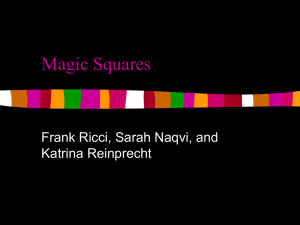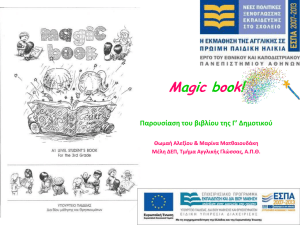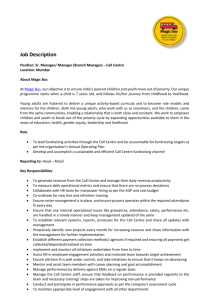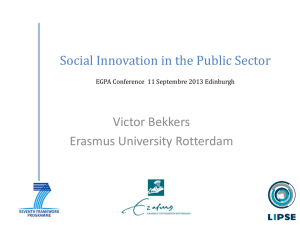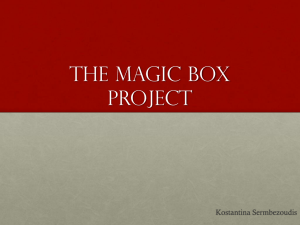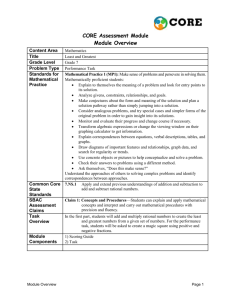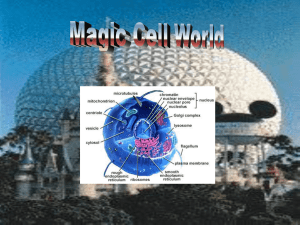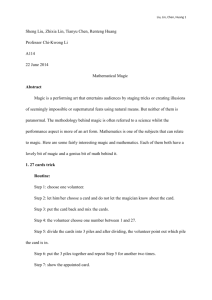The Art of Magic
advertisement
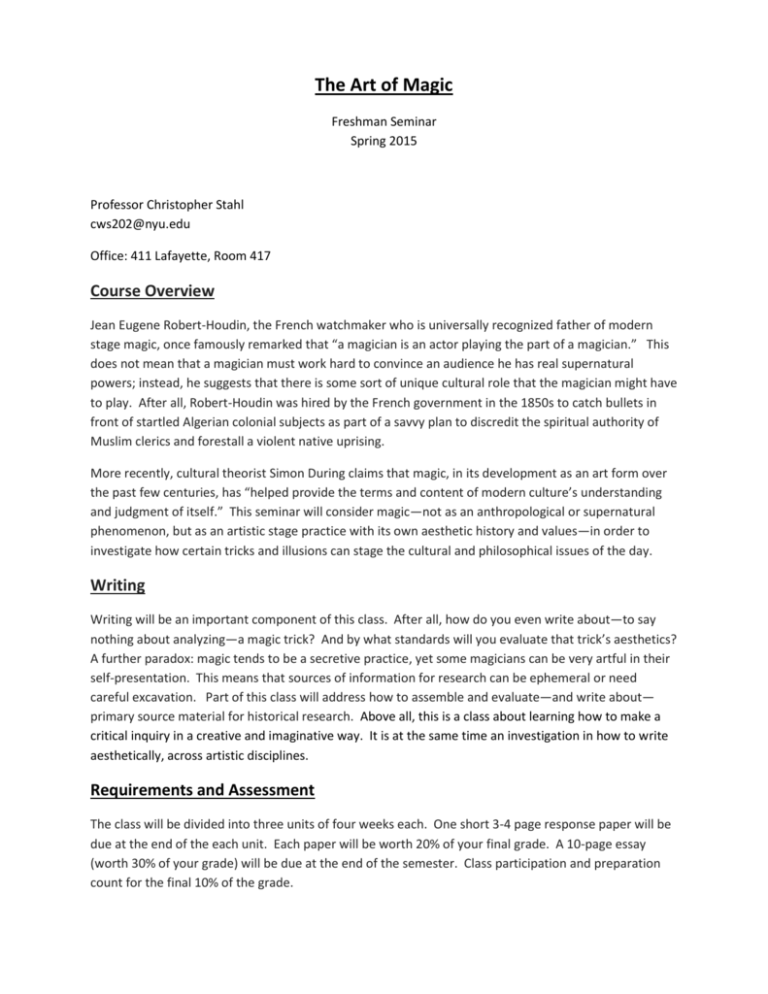
The Art of Magic Freshman Seminar Spring 2015 Professor Christopher Stahl cws202@nyu.edu Office: 411 Lafayette, Room 417 Course Overview Jean Eugene Robert-Houdin, the French watchmaker who is universally recognized father of modern stage magic, once famously remarked that “a magician is an actor playing the part of a magician.” This does not mean that a magician must work hard to convince an audience he has real supernatural powers; instead, he suggests that there is some sort of unique cultural role that the magician might have to play. After all, Robert-Houdin was hired by the French government in the 1850s to catch bullets in front of startled Algerian colonial subjects as part of a savvy plan to discredit the spiritual authority of Muslim clerics and forestall a violent native uprising. More recently, cultural theorist Simon During claims that magic, in its development as an art form over the past few centuries, has “helped provide the terms and content of modern culture’s understanding and judgment of itself.” This seminar will consider magic—not as an anthropological or supernatural phenomenon, but as an artistic stage practice with its own aesthetic history and values—in order to investigate how certain tricks and illusions can stage the cultural and philosophical issues of the day. Writing Writing will be an important component of this class. After all, how do you even write about—to say nothing about analyzing—a magic trick? And by what standards will you evaluate that trick’s aesthetics? A further paradox: magic tends to be a secretive practice, yet some magicians can be very artful in their self-presentation. This means that sources of information for research can be ephemeral or need careful excavation. Part of this class will address how to assemble and evaluate—and write about— primary source material for historical research. Above all, this is a class about learning how to make a critical inquiry in a creative and imaginative way. It is at the same time an investigation in how to write aesthetically, across artistic disciplines. Requirements and Assessment The class will be divided into three units of four weeks each. One short 3-4 page response paper will be due at the end of the each unit. Each paper will be worth 20% of your final grade. A 10-page essay (worth 30% of your grade) will be due at the end of the semester. Class participation and preparation count for the final 10% of the grade. Unit overview Unit One: Magic and Modern Life This unit looks at the self-conscious development of “modern magic” during the latter half of the 19th century. We will examine such primary source materials as Jean Eugene Robert-Houdin’s Secrets of Conjuring and Professor Hoffman’s Modern Magic, texts that helped to define the look and ethos of contemporary stage magic. We will also examine the work of magic theorist Simon During and contemporary magic historian Jim Steinmeyer. This unit also asks questions about historiography: as scholars, how do we develop an archive of material to look at? How do we learn to read that archive? What does the archive for something like stage magic consist of? Unit Two: The Incredible Re-appearing Magician This unit compares the role of magic and the figure of the magician in popular and mass culture in both the 19th and the 21st centuries. Around the turn of the 20th century, stage magic was one of the most popular performance forms in the United States, and well-respected in much of Europe. The affairs of well-known figures like Harry Houdini and Howard Thurston were public news. At that point, the image of the magician was often a tuxedo-clad gentleman who would amaze and delight his audience. Now, that image—and the cultural position of magic—has changed. Figures like Siegfried and Roy channel a kind of showbiz glamour, while figures like Criss Angel evokes something darker. As we work with cultural historians like Fred Nadiss, film theorists like Matthew Solomon, and anthropologists like Graham Jones, we will ask: What has changed? What has stayed the same in the representation and the self-presentation of the magician? And what of the tricks themselves? In what ways does a magic trick engage with or reflect its cultural and historical ethos? Unit Three: Art and Magic This unit examines the relationship between stage magic and other, more culturally recognized art forms. What makes stage magic an art form and not just a skillful display of manual dexterity? And if it is an art form, how does it relate to (and differ from) other forms of art, like theater or film or photography? How has stage magic been depicted in contemporary art and culture? We will begin this unit with Plato, who warned that magic and art are related in their ability to trick the unwary mind. We will then explore texts such as Reginald Scott’s The Discoverie of Witchcraft, which was used by Shakespeare as a source for his plays, and the essays of Walter Benjamin, which argue for an understanding of enchantment as a critical lens for seeing the modern world. Finally, we will consider contemporary artists (such as Matthew Barney and Hiram To) whose works reference stage magic and stage magicians.
